Brass Diva: The Life and Legends of Ethel Merman (25 page)
Read Brass Diva: The Life and Legends of Ethel Merman Online
Authors: Caryl Flinn
Of course, people knew Ethel to use language and jokes offstage that
would make the proverbial sailor blush, apparently outdone only by Tallulah
Bankhead. Onstage, Ethel tamed those qualities without ever apologizing for
them. "It is rough and rather coarse in spots," ran a DuBarry review, "but the
very frankness of its bawd[iness] and the blithe refusal of the stars even to
admit that there is anything to be abashed about should disarm the sternest
moralist."63 What Ethel did was create a sense of both bawdiness and good
clean fun.
What was beginning to intensify was a lifelong tension between Ethel's
skills as an attractive singer and those of a boisterous comic. In the late 1930s
in shows like Stars in Your Eyes and DuBarry, Ethel was allowed to be both. (A
female critic even described Ethel's DuBarry as "gorgeously comic." )64 But the
balance would prove hard for her-or for any other female performer-to keep.
Throughout the 1930s, Merman's musical comedies had contained risque
elements, partly the vestiges of vaudeville and burlesque comedy, partly the
influence of costars such as Lahr, Durante, Haley (vaudeville hams all), the
characters she portrayed (gangster molls, brassy single women), and the lyrics
of her songs ("Anything Goes," "Eadie Was a Lady"). In the early '3os, critics would blame the book or the lyricist if things bordered on racy. By now,
at the end of the decade, such complaints were beginning to spill over, indirectly, onto performers. Ethel was lucky to avoid the slime.
As far as Broadway musicals were concerned, the complaints over
DuBarry's rough gags suggest two things. First, that the lighthearted book
musical was getting tired. Broadway audiences had experienced a decade of
light escapist fare in the '3os, but they had also experienced the novelty of
shows like Porgy and Bess. The second issue involves the entertainment industry's relationship to world events at hand. By the time DuBarry ran, war
was consuming Europe, and despite the official isolationism of U.S. policy,
concern was mounting for the situation and for the refugees and orphans that
fascism was already churning out. Stars like Merman were already going to
rally after rally to lend their names to fund-raising and relief efforts.
In times like this, lighthearted fare can turn on itself, for it's a fine line that
separates escapist, pleasurable diversion from entertainment that is out of touch, inappropriate, or insensitive. DuBarry ran at a time when Life with Father, Too Many Girls, Leave It to Me! and Pins and Needles were also on Broadway, and while none tackled the war or other current events, critics rightly
viewed DuBarry as one of the more dated shows. It took no risks except that
of not taking any.
As the United States grew more sensitized to the conflict, the values it
wanted to uphold grew more conservative and old-fashioned. The obvious
irony here is that "older fashioned" forms of comedy were becoming less acceptable, deemed in poor taste: vaudevillian double entendres were flying in
the face of family-friendly fare and a nation wanting to unite through homespun humor and honorable women. Sex found expression in monogamous
marriage, and jokes were of the "good, clean fun" variety. Obviously this isn't
what Broadway theater (and to a reduced extent, film and radio) was going
to provide in toto; after all, "adult" stars like Tallulah Bankhead, Beatrice Lillie, and Noel Coward were in their prime.
Despite Americans' reelection of the liberal FDR to a third term in 1940,
a more conservative ethos ruled the day, and by the time of DuBarry, entertainment was a more conservative beast than it had been during the days of
Take a Chance. In regard to Ethel, this meant several things. First, we are seeing the early signs of her spirited characters becoming more politicized; second, by contrast, that "all-American girl-next-door" persona is mutating into
a tough-talking woman of experience, an image enhanced by stories of her
offstage battles, such as those with Durante and Hope. Thus, while Ethel still
embodied wholesome energy and verve, the good stenographer was giving
way to a brassier, harder persona, a trend that intensified as years went by. But
bright or tarnished, underneath was a generous, even vulnerable, woman,
whether onstage or off.
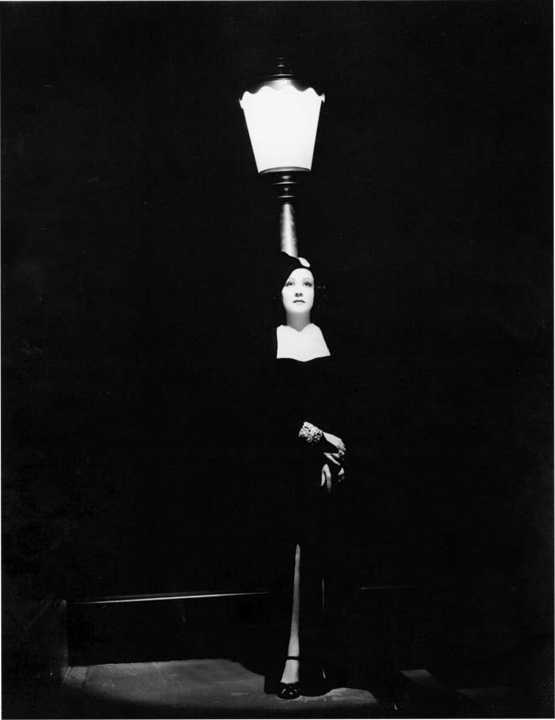
Ethel Merman at lamppost, 1930s. Courtesy of Sydelle Kramer.
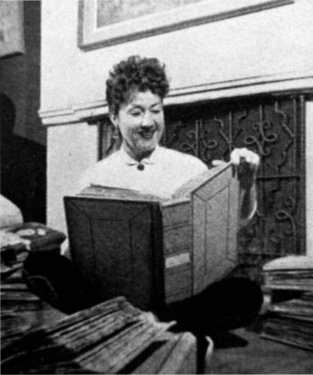
Ethel with the scrapbooks maintained by
her father. Courtesy of the Museum of the
City of New York.
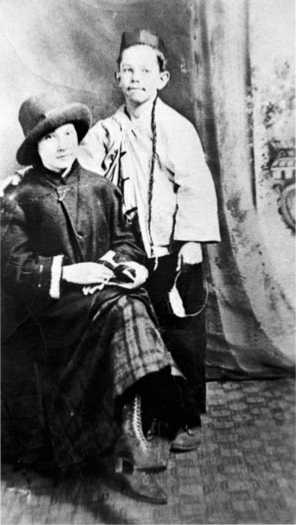
Ethel as a young girl with an unidentified boy. Courtesy of the Museum of the
City of New York.
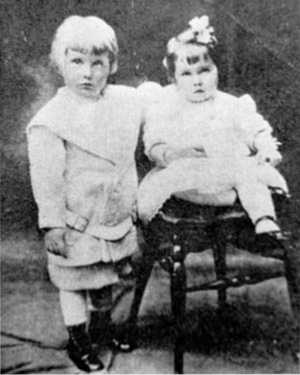
Ethel, age three, with her cousin Claude
Pickett (standing). Courtesy of the
Museum of the City of New York.
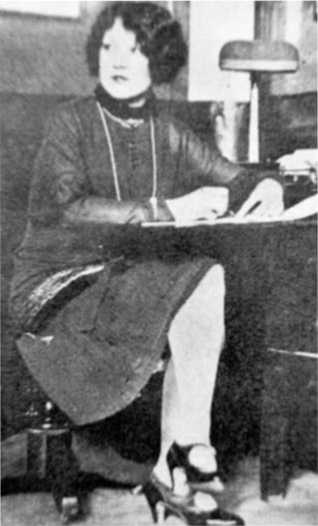
Ethel the stenographer, mid-192os.
Courtesy of the Museum of the City of
New York.
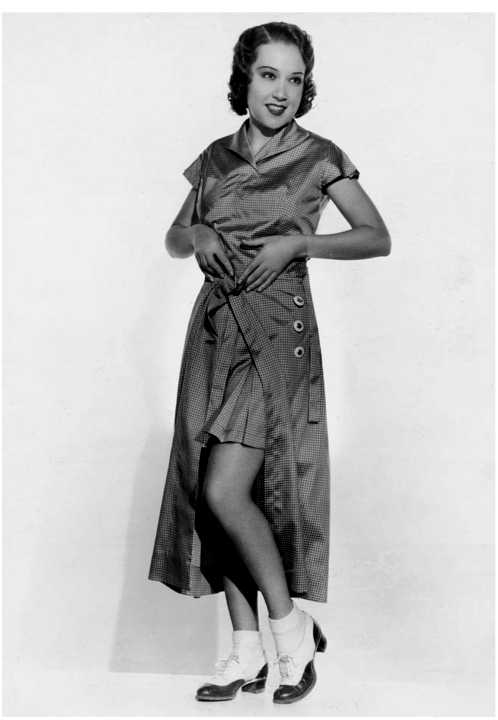
A modest flapper. Courtesy of the Museum of the City of New York.
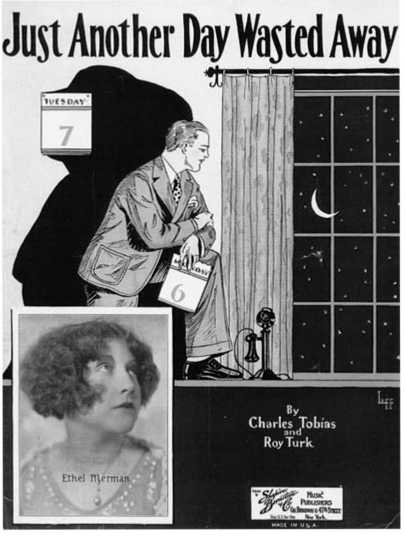
Sheet music featuring Ethel
Merman, 1927. Courtesy of the
American Musical Institute.
At the radio mike, early 1930s.
Courtesy of the Museum of the
City of New York.
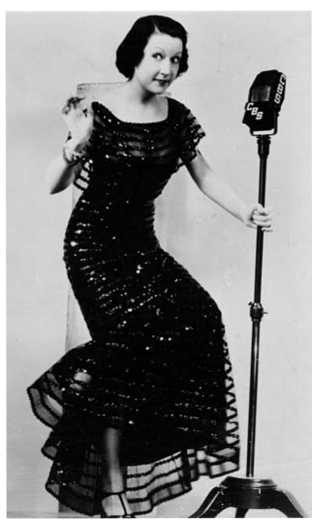
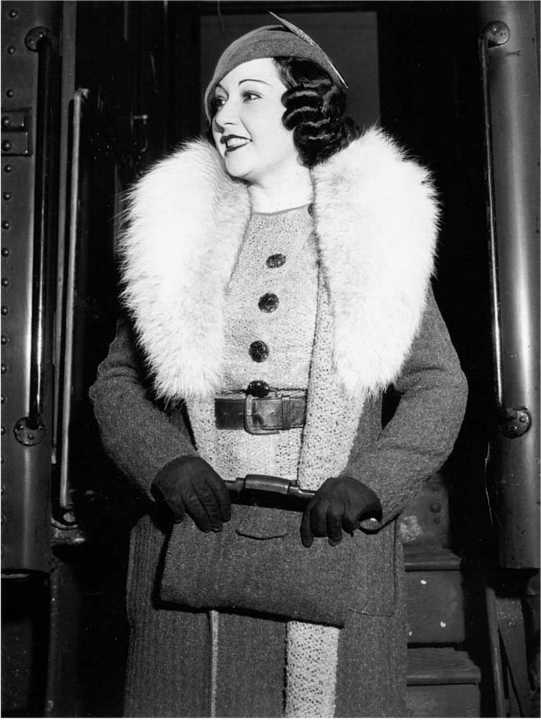
Ethel arrives in Los Angeles, 1933. Syndicated ACME photograph;
courtesy of Al F. Koenig Jr.
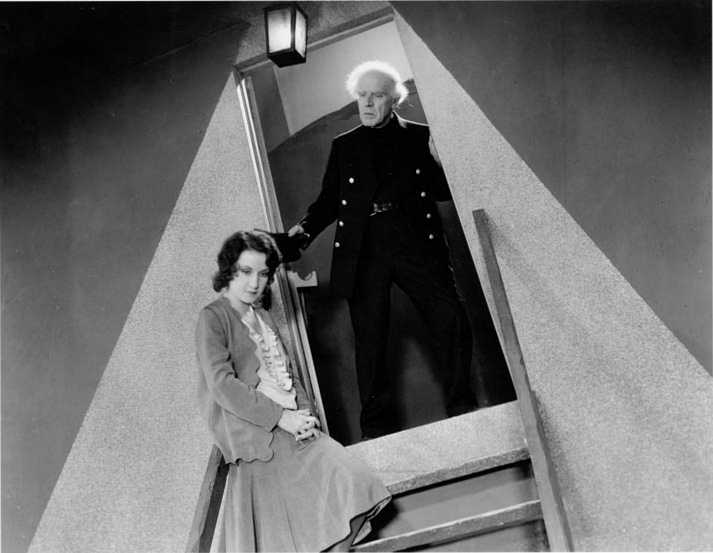
Ethel and Leslie Stowe in the expressionist short Devil Sea, 1931. Author's collection.